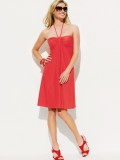Read this ebook for free! No credit card needed, absolutely nothing to pay.
Words: 24475 in 9 pages
This is an ebook sharing website. You can read the uploaded ebooks for free here. No credit cards needed, nothing to pay. If you want to own a digital copy of the ebook, or want to read offline with your favorite ebook-reader, then you can choose to buy and download the ebook.


: Barnavännen 1905-01 Illustrerad Veckotidning för de Små by Various Gauffin J B Editor - Svenska missionsförbundet Periodicals; Children's periodicals Swedish; Christian education Periodicals; Bible stories Swedish Periodicals; Sunday school literature
PUBLISHED WEEKLY. NEW YORK, TUESDAY, NOVEMBER 17, 1896. FIVE CENTS A COPY.
BATTLE OF GLEN FREON.
BY THE MARQUIS OF LORNE.
There was great destruction brought on the MacGregors, and many lost their lives, their lands, and their name. And the cause was this: The widow of a MacGregor dwelt in a place called Tulach, at the nether part of Glen Streatha. Her house was about half a mile from the place where the abode of the chief MacGregor himself was. She had two sons, and these, when they were but young, began to be pack dealers or peddlers, going to the Lowlands to buy, and going through the Highlands to sell their wares again. Once they went on a journey to Dumbarton to buy goods, and on returning homewards they passed along the west side of Loch Lomond. But as they tramped on by the lands of Sir Humphrey Colquhoun, of Luss, heavy snow fell, and the track became very difficult to travel, for there were no roads in those days in the Highlands that could be used for wheeled carriages or carts, and when the foot-track was covered with snow a man had to be very well acquainted with the district not to go astray. The two boys went on until they reached Luss, a village on the banks of the beautiful Loch Lomond. There they asked for food, tendering payment, and being asked who they were, they owned that their name was MacGregor, for they did not know how much the people whose hospitality they craved hated that name. Neither for favor nor for payment would the Luss people give the boys any food. The boys saw well how much they were disliked on account of their race, and they became anxious to go away. Up Glen Luss and through Glen-Na-Sreinge was the shortest way in those days for any one to reach the head of Loch Lomond, but the distance was great and the snow made the journey most difficult. On the east side of the loch the most numerous clans were the Curries and the MacGregors, and they occupied the country from Pollach to near the north end of Loch Lomond, through what was called the Sho's, or Slope, near to the pass of Balla-Na-Chatha. The Slope was very rough and difficult to traverse, and its inhabitants had the reputation of being very fierce. The Slope of Ben Lomond was called Croigchrosdain, and the people dwelling there were distinguished by this name from the other MacGregors. The people of Luss declared these men came frequently in their boats across the Loch to steal cattle and take whatever they could lay their hands on, and that when a raid had thus been made it was as much as a man's life was worth to go to ask for restitution.
The famous Virginian Calhoun came of this family.
It was therefore no wonder that the young lads were badly received, for they had not disguised their names, and no man would help them to get home. They consulted together and determined to try to get across the loch, and went to a place called the Caolaig, where a boat was kept by a man who, when payment seemed assured, undertook to ferry people over to the other side. The boys begged that they might be put across the water, but the night threatening storm and the ferryman disliking to cross, they were refused. They begged for shelter, but this was also denied them. Food there was none for them at Caolaig any more than at Luss. Left by this harsh treatment to shift for themselves, they looked around for some place where they might find refuge, and at last they found a goat shelter, and went into this, and lay down in the cold and darkness, waiting in fear until they thought every one had gone to rest before they dared try to make a fire. When they thought that they would not be seen they made search for fuel, and happened on an out-house where a farmer had left some agricultural implements. The shafts and handles of these the boys took, breaking them up for fire-wood. A plough that had a good deal of wood in it they destroyed for fuel, and lit a fire, and having caught a young goat, killed this and roasted it to satisfy their hunger. All this had been done, as they supposed, without any one having been able to notice them, for they had hidden their fire as much as they could, and the snow and storm made them think themselves secure. But some one saw the light, followed them, and seeing what they had done, went to Rossdhu, and told Sir Humphrey Colquhoun that the MacGregors were at their old work again. A band of men was quickly got together, and the two youths were caught and taken to Sir Humphrey's place, and there put in prison. A court was held, witnesses were examined, the case against them fully proved, and they were sentenced to be hanged on a day that was named. Whether any of their kindred were present at the trial is not known, but in a very short time the news spread through the country that the lads were to be executed, and the men of Glen Gyle and Croigchrosdain resolved to go in a body under their chief to the place of punishment and ask for the corpses of the lads to take them back with them for burial in their own district. When the day arrived Sir Humphrey had a large force of men besides those from his own estate. He caused the two prisoners to be brought from the prison of the House of Rossdhu to a knoll called in the Gaelic Tom-Na-Cruaich , a short distance from the Light Grey Brook, by the side of the highway. The Colquhouns selected a fir-tree, which grew on the mound, to serve as a gallows, and the two lads were made to stand up to be hung. But something went wrong with the withes of the gallows, and the two lads fell as soon as their weight was on the ropes, and were not much the worse. Then a great shout went up from the MacGregors and Curries who had come over the loch. "The sentence of the law is fulfilled. Let the prisoners go." They rushed to the gallows, intending to rescue the lads, but their numbers were small in comparison to the followers of Sir Humphrey, whose men spoke insolently and contemptuously to them, while they barred the way, and prevented any nearer approach to the place where the lads lay. Meanwhile new withes or ropes had been adjusted, and the prisoners were hung up again, and left to die, amid the cries of their friends, who shouted and yelled beyond the crowd of the men Sir Humphrey had closely surrounding the mound. When it was evident that the lads were dead they were let down, and their heads were cut from their trunks, and the heads were placed on stakes, one on each side of the gate of Rossdhu. The men who had demanded their pardon went away full of anger.
The tragedy that had taken place was detailed in all its sadness and horror to the lads' clansmen wherever they could be found. Messengers went from village to village recounting the story by the peat fires in the little cottages, where under the thatched roofs and within the unmortared walls the cows and the hens and the family lived together. The messengers always began by saying that if any of the MacGregors had lost any of their young men, they should go to the gate of Rossdhu House, and see if in the features of the death heads on the posts on each side of the gate they could discern the features of their loved ones. The widow of Tulach in Glen Streatha heard the story, and anguish came on her as she thought that this cruelty might have been dealt on her children who had not returned when she expected them home. She made ready speedily, and went over the moors, travelling without pausing until she arrived near Rossdhu. She drew near to the gate and saw the heads, and even from a distance she thought she recognized the shape of her sons' heads, and coming close to the posts standing there with their trophies on them, she saw that her forebodings were too true. She took an opportunity, and had the heads taken down, and tied them up in two pieces of cloth, and walked back, carrying a head in each hand. And reaching her own glen she went to MacGregor's house, and laid down the two heads at his feet, letting them out from the cloths which hid them, and then burst into lamentation and tears, and at last told him how she had carried them away with her. Then the chief, who knew and loved the two youths, was greatly enraged with Sir Humphrey, and resolved to encounter him. Before he proceeded on his designs he went to the Earl of Argyll and asked his advice, and his counsel was that MacGregor should ask to meet Sir Humphrey with a hundred men on each side, so that an account might be given by the Colquhouns as to what had happened, and the reasons for the cruel treatment of the lads. For, said the Earl, if Sir Humphrey has no good reasons he may pay the old ransom called, from the days of the Norse invasions, "eirig," or a fine for their deaths, and all fighting be avoided. In any case, he counselled that MacGregor should not be the first to begin to shed blood, unless in self-defence. Then the chief went to Ardkinglass, where Mac Ian Riach advised him to go and have an interview with Sir Humphrey, saying that the MacGregors might go through the Ardkinglass lands and have a night's lodging in Ganavin at the side of Loch Long, and that the people there were to ferry the band over the loch on the day following their arrival. All was carried out as had been suggested by the Earl, and Sir Humphrey made answer that he would meet the MacGregor chief, and tell the MacGregors of the crimes of the youths at the upper end of Glen Freon on a Saturday, and that he desired to explain all that there might be peace.
As soon as this answer had been conveyed to the district where Alexander MacGregor had his followers, he assembled two hundred men, giving his brother the command over one hundred, and himself taking the leadership of the rest, and marched towards Luss. They left Glen Streatha on Friday, and went through the Caothran of Glen Fine, and arrived at Ardkinglass Castle. Then instead of going by the highway of the Highlanders up between Ben-Nan-Luibhean and Ben-Tomadh, they went through the lands of Mac Ian Riach , over the moors as far as Ganavin. There they got ferried across the loch to a place called the Tmire Franyach . Landing, they ascended by the slant of the moor, and passed the top of Sron Mhailein, crossed the water of the Callanach at the Broad ford, and went on by the highway of the Highlanders above the place of the Man of Tom-Bhui, until they reached a brook called Alt-Na-Chle. They halted there to rest, and took special note of the situation of this place, for the burn had a very rough course, and formed the march between the land of Fionnart and Tom-Bhui. There were two fords within a short distance of each other near the Highlanders' way; but most of the bed of the torrent lay deep, and abounded in deep hollows, the burn flowing in a series of falls from a third of the distance from the top of the moor to the shore of Loch Long. Although the two fords are narrow, yet it was over them that the cattle were driven when the Highland caterans, or robbers, took spoil from the Lowlands. The MacGregors thought that this impetuous burn's course would give an excellent place where a reserve of men might be left in case the Laird of Luss should prove false to them. So the chief's brother was left there with one hundred men, while he went himself with a like number to meet Sir Humphrey.
The place where the reserve men were thus placed in ambush, or at call, was a remarkably secret one. There is a rock on the side of Fionnart of the ford of the highway of the Highlanders, which, although of no great height, is so wall-like that no one can climb up the face of it. It is on the moorland side of the track, and there is a little hillock on the top of it, and at the top of this hillock the waterfall of Alt-Na-Chle flows with a bend round it, and returns again beneath it to the Highlanders' way. The water falls steeply below this pass, and again sixty paces lower, where there is a spot where the torrent can be passed, but this is practically only at these so-called fords, for below there is no good passage. John MacGregor and the band selected to remain at the burn went up and concealed themselves behind the hillock, where they were near enough to the track to throw stones upon it, although they could not be seen where they lay. Alexander of Glen Streatha, when he had seen his 74 En intressant bok. 76 Sm? djurv?nner. 77 Genom morfars glas?gon. 83 En ovanlig sl?df?rd. 84 Tv? sm? dockmammor. 85 Solblomster. 92 En farlig strid. 93 Namnsdagss?ng f?r far. 100 Stackars Beppo! 101 De sm? mission?rerna. 102 N?r lillebror kom. 108 Farmors f?delsedagss?ng. 109 M?rden i h?nshuset. 110 Erik och Anton. 117 Hans Christian Andersen. 119 H. C. Andersens barndomshem i Odense. 119 Vid Jesu kors. 124 ?teruppst?nden. 125 Jesus p? v?g till Emmaus. 132 Frukost ?t g?ssen. 133 Jesus v?lsignar barnen. 140 Hvem skall ge vika? 141 Brodersk?rlek. 143, 159 Vid systers b?r. 148 S?ngargossen. 149 Indianer och hvita. 156 Dr?m. 157 Den lilla flickan med t?ndstickorna. 164 F?r v?ra allra minsta. 165, 166 Lilla Berta. 172 Barnsligt. 173, 174 Min lyra. 179 Hon vann seger. 180, 181, 182 Gult och bl?tt--Svenskt och godt. 185 Blomsterf?rs?ljerskan. 186 En presentation. 188 L?rkans hemlighet. 190 Tre generationer. 196 Ett farligt djur. Den amerikanske bison. 197 R?fvare. 204 I solvarm sommar. 205 En kindergarten. 212 Jesus, M?stare! 213 Karl och Greta. 214 Solskeppet. 220 Den lille konstn?ren. 221 Lisa och Lars. 222 En f?rel?sning. 228 Stilla kisse. 229 V?rblom. 236 Ett Herrens s?ndebud. 237 Bror kommer hem. 244 N?r k?rsb?ren mogna. 245 Mellan blommor och blad. 246 Omaka lekkamrater. 252 Hvem ?r hon? 253 En sv?r uppgift. 254 Aftonst?mning. 259 Svenska bilder: Kalix. 260, 261 Att dikta sagor. 267 Svenska bilder: Haparanda. 268, 269, 276 D:o Torne?. 276, 277, 278 D:o Midnattssolen fr?n Haparanda kyrka. 277 D:o Pite?. 284, 285 D:o Lule?. Betelkapellet. 292 Liljor. 293 Svenska bilder: Lule? 294 Vallflickans s?ng. 300 Svenska bilder: Lule?. 302, 303 Den lille ?ppeltjufven. 308 Svenska bilder: Larossavaara malmberg och Kiruna stad. 309 D:o Kirunavaara malmberg. 310 D:o Jukkasj?rvi kyrka. 310 Frisk vind. 316 Svenska bilder: Vid Abisko. 317 D:o Bj?rkliden. 318 D:o Tornehamn. 318 D:o Lappl?ndsk vinterbild. 325 D:o Stationen Riksgr?nsen. 325 D:o Lappbruden vid Vassijokki. 326 Nyfikna v?nner. 332 Svenska bilder: Rombaksdalen. 333 D:o Narvik. 334 Doktor Barnardo. 339 Svenska bilder: Gellivara. 340, 341 D:o Malmberget. 341, 349 I D:r Barnardos v?ntsal. 348 Fr?n D:r Barnardos barnhem. 355 Framtidsdr?mmar. 357 Svenska bilder: Stationen vid Murjek. 358 I barnhemmets kyrka i Ilford. 363 Fr?n barnhemmet i Ilford. 363 Mormors f?delsedag. 365 Svenska bilder: Bron och forsen vid Porsi. 366 D:o Vattenfallet vid Edefors. 371 Tv? v?nner. 372 G?sungarnas frukost. 373 Svenska bilder: Edefors g?rd. 379 Till Amerika och hem igen. 380 Kissekatten och jag. 381 Svenska bilder: Fr?n Boden. 387, 394, 396 D:o Svartl?. 388 En styrkedryck. 389 L?t oss sjunga. 397 En julglimt. 404 Flitiga gossar. 405 Soluppg?ngen fr?n h?jden. 410 Nu stundar den heliga julens tid. 412 Lillans julrim. 413 F?glarnas jul. 420 En juldr?m. 421 Solrosen. 424 Sveas Ny?rsb?n. 425
BARNAV?NNEN
N:o 1 Illustrerad Veckotidning f?r S?ndagsskolan och Hemmet. 22 ?rg. 5 Jan. Redakt?r: J. B. GAUFFIN, Uppsala. 1905
V?lkommen till oss, du nya ?r!
Free books android app tbrJar TBR JAR Read Free books online gutenberg
More posts by @FreeBooks








